What Remains of Edith Finch is a narrative adventure videogame about an unusual house and the many generations of the Finch family who lived in it. I assume the role of Edith as she returns to the house following her mother’s death, experiencing the stories of twelve Finch family members by moving through a labyrinth of rooms and examining the objects I find within them. I build a complete understanding of the family’s history as I learn about their lives, their deaths, and most importantly, how their deaths affected each other, leading all the way down to their last surviving daughter, Edith Finch.
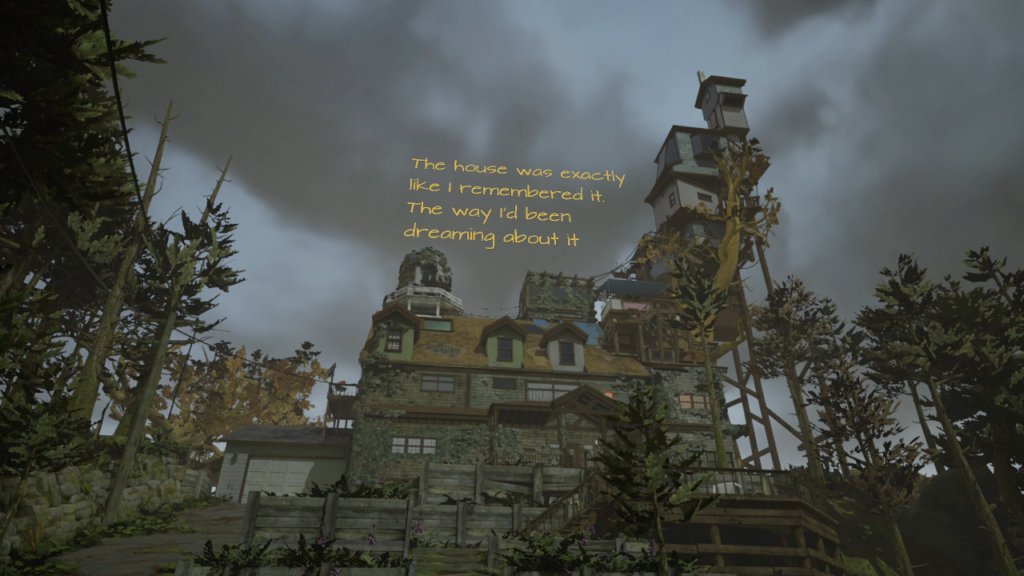
The most prominent character in What Remains of Edith Finch is not the one in the title or any of her deceased family members, it is the house itself. It was built on the shore of Orcas Island in Washington State by the children of Odin Finch, Edith’s great-great-grandfather. Odin brought the Finches to the United States hoping to escape a curse he believed was killing every member of the family. He succeeded in the move but drowned just when they reached their new home.
When I first approach the house I see what was a modest manor now scarred by new additions built inexpertly onto its roof, suspended on stilts and connected by perilous stairwells. The strange architecture is due to Edie, Edith’s great-grandmother, who insisted on keeping all her children’s and grandchildren’s rooms intact following their deaths. Dawn, Edith’s mother, wanting to prevent Edith from using these rooms to learn about her relatives, sealed all the bedrooms shut, leaving them as pristine time capsules. Unbeknownst to Dawn, Sven, the house’s original builder, connected almost every room with secret passages. Most of the puzzles I encounter, which are exceedingly gentle, are to find my way into these secret passages to investigate each room, learn about its former occupant, and advance the story of the Finch family.
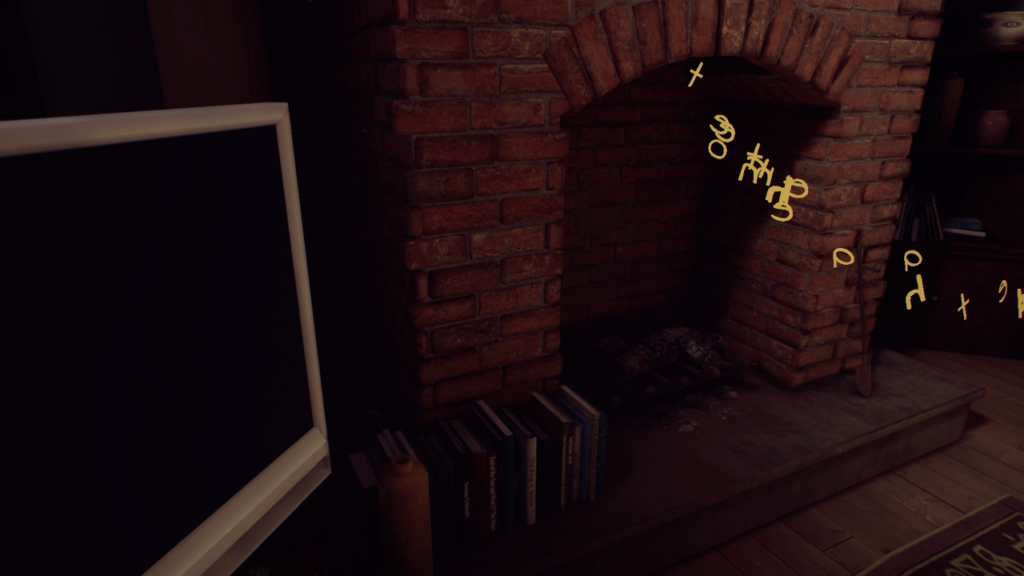
As I explore the house and examine its artifacts, Edith narrates the memories and feelings they spark. This narration appears as text on walls and attached to objects as though the Finch family story is literally written into the house. Climbing the stairs to the front door, I spot a metal dragon sculpture lying submerged in a pond and Edith recalls her grandmother telling her the dragon had killed her grandfather. When I crawl through a dog door, Edith remarks it was much easier to do when she was eleven. Passing the fireplace, Edith remembers that it was built from bricks taken from Odin’s old house; these words appear across the bricks before sweeping up the flue. An impressive amount of the environment has reactive narration to accompany it, providing depth and context to many sights within the house and rewarding my thorough exploration of all its corners.
This can make it more interesting when Edith doesn’t comment on something when I look at it. When I enter the house I pass a calendar pinned open to January 2010, suggesting the date the house was last occupied. In Barbara’s room I find an ordinary waitress’s uniform hung amidst souvenirs from her time as a child movie star, a sad representation of where her life started and where it went. And every single room of the house is stacked with novels, from Alice in Wonderland to One Hundred Years of Solitude, communicating without words the Finch family’s obsession with strange and morbid stories.
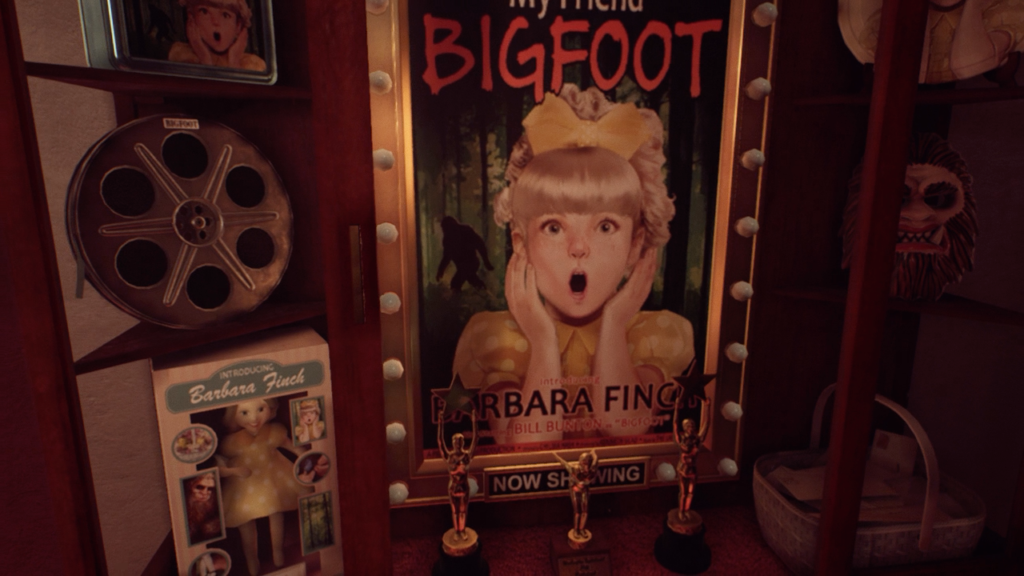
After I find my way into a bedroom, I can poke around the former occupant’s belongings to get a better idea of who they were as a person. Some provide incidental details, others prompt inferences and musings from Edith’s narration, and all of them can be pieced together like a puzzle to get a more complete picture of their owner.
The real treasure in each bedroom is the item that tells the story of its former occupant’s death. The medium this story is told in varies from person to person. Molly’s death is recounted through her final diary entry. Barbara’s death is told through a comic book styled after classic Tales from the Crypt issues, complete with a pumpkin-headed parody of the Crypt Keeper providing darkly humorous commentary. Sam, a shutterbug, has the story of his death portrayed by the photographs he took in his final days. Some stories are only narration over still images. Others place me in the events as they are described. In one minute I might be recast as a cat stalking a bird through the treetops, in the next I am a boy flying a kite at his father’s wedding.
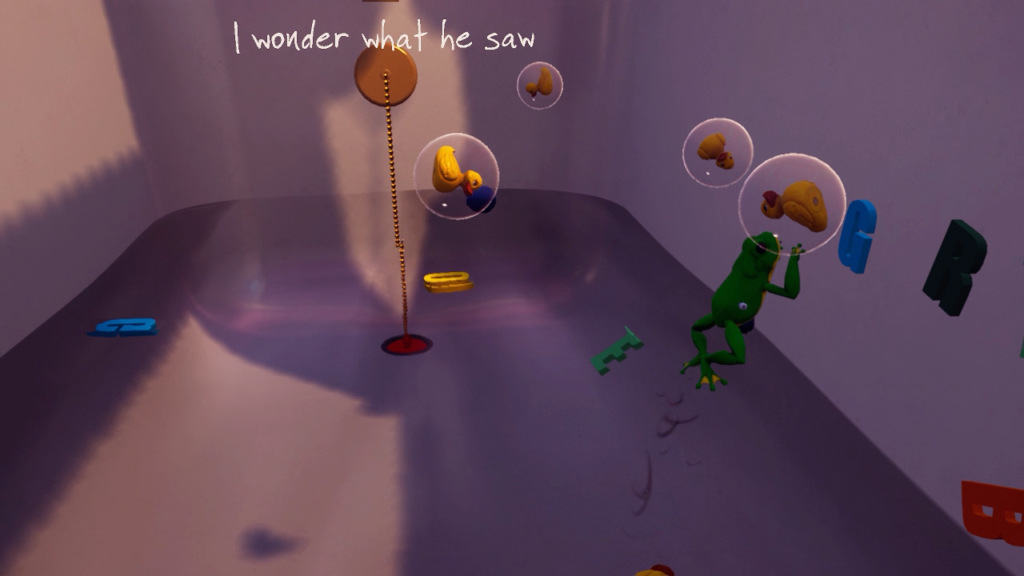
A videogame about the deaths of an entire family might sound depressing but What Remains of Edith Finch maintains a tone that is wistful and melancholy, if macabre, throughout. It knows when to interrupt its darker moments with absurd comedic beats, most memorably when a shark bounces down a hill into the sea, pinballing between trees and across a road with exaggerated videogame physics. It also knows when to contrast its subject matter with whimsy; perhaps the saddest chapter is about playing with bath toys set to the Waltz of the Flowers from Tchaikovsky’s The Nutcracker. Each story uses a unique mechanic or activity to imply through symbolism and implication the death of a Finch family member while rarely depicting that death onscreen.
Most impressive of all is how well What Remains of Edith Finch creates these scenarios without deviating from using the joysticks and right trigger. I consistently feel disorientation when I enter a new scene and have to figure out how the controls now function, but their simplicity never makes this feeling last more than a moment. In one moment I am a sea monster, pulling myself along the deck of a ship by extending my tentacle forward with the joystick then pressing the trigger to pull myself forward, lurching ravenously towards the cabin where the crew works unawares. In another moment I am a daydreaming cannery worker, guiding fish into a chopping block with the right joystick while wandering through a labyrinth in the player character’s mind with the left. In another I am a boy on a swing and use the left and right joysticks to thrust his legs forward and back, sending the boy higher and higher. I never know what will be thrown at me next but I can always count on it being effortless to control.
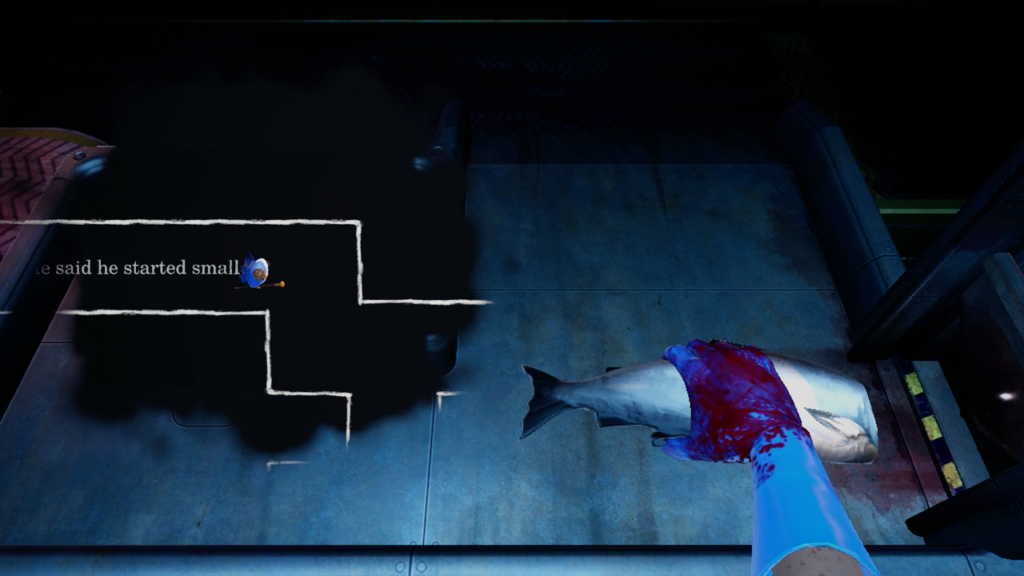
Throughout all this I find myself grappling with a simple question: Is the Finch family really cursed? It is the fate of every person to die, so the Finches dying is not abnormal in spite of their knack for going out in unusual and premature ways. They may be cursed, or their deaths may be due to belief in the curse changing how they live their lives. There may be no real difference between these two possibilities. The meaning I will draw from What Remains of Edith Finch is tied to the answer to this question. Since the answer is never provided that meaning is left up to my own interpretation. This is what makes the ending the most frustrating element for me: What remains of Edith at the ending is head-slappingly obvious and accompanied by imagery so ridiculous it makes the whole experience end on a sour note.
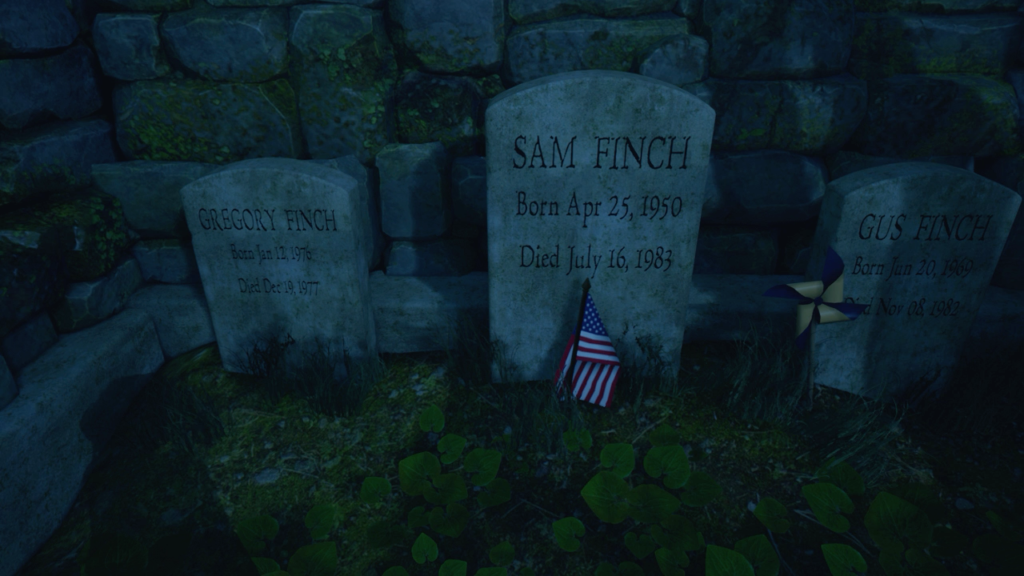
What Remains of Edith Finch is the kind of story that is best told as a videogame. It could be told in other ways—with alternate reality, a house-sized escape room, or an especially elaborate pop-up book—but it would lose some of its artistry and most of its approachability in the process. It’s a ludocinematic experience, the act of play and the visual meaning of images composed on the screen intersecting to create unique storytelling opportunities. I am disappointed by its ending, but that disappointment is only remarkable because the rest of the experience is so stellar. I highly recommend What Remains of Edith Finch to narrative and adventure videogame fans, and clocking in at a mere two to three hours, it’s easy to slip it into a busy schedule.